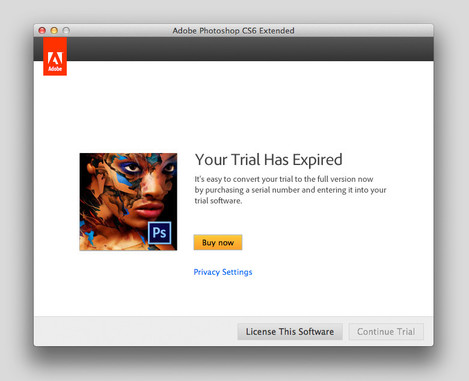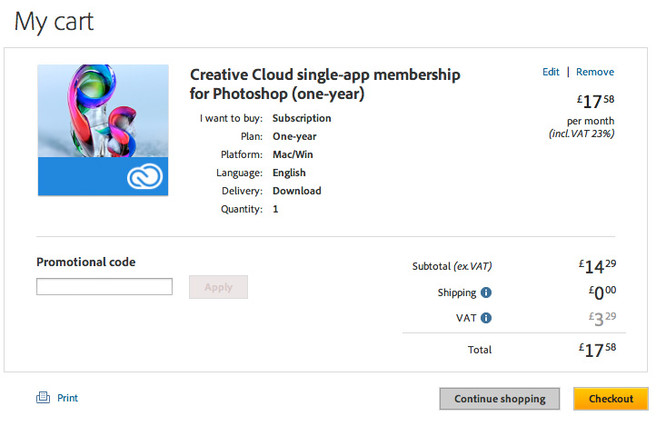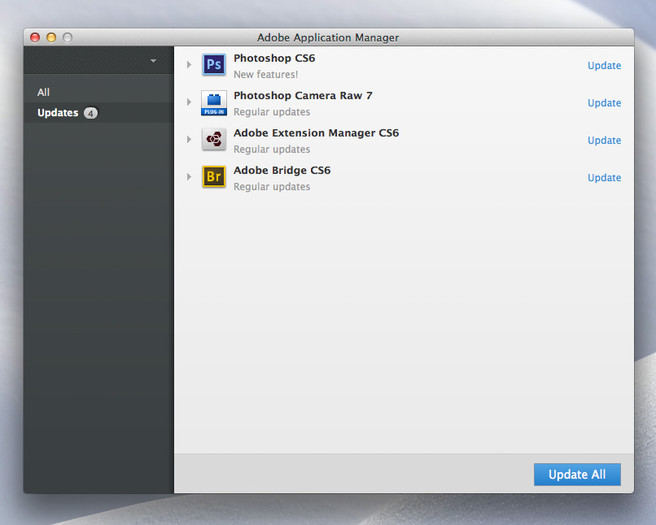Looking for a silver lining..

Paul Arthur
Paul is a commercial architectural photographer in Birmingham and sometimes dabbles in a little landscape photography when he is allowed out!
Well, yes. And no. As usual, it depends on your perspective, what your current and future usage of Photoshop is likely to be, what other services you may need from Adobe and how you organise your photographic library.
If you don’t know what all this talk of Creative Cloud is actually about, let me explain: In the past Adobe has usually updated its suite of software every year and half or so, providing better performance, more refined capability and new tools to help creatives in their work. The cost of the whole suite of software ran in to several thousands of pounds for each full incarnation, and even photographers who chose to purchase Photoshop on its own would be left with a hole in their wallet to the tune of over £600, or £900 if they needed the extended version capable of 3D modelling. Of course, upgrade versions were available at usually greater than 50% reduction, but this still amounts to significant annual investment to keep you up to date.
The age of almost annual product refreshes are however gone and a new subscription model is now upon us, and this has raised eyebrows far and wide. The bottom line though is that in order to get a full copy of Photoshop after the current iteration (CS6), you will have no option but to sign up for a subscription costing anything from £18 per month for a single application (or £9 if you are able to upgrade from a previous version of the software) up to £47 per month for the full suite of applications (£27 for existing customers). Whilst this commitment is small change compared to the previous up front cost, it does have one crucial drawback: once you stop paying your subscription, your software will no longer work.
So what do you get for your money under the new system? Although the need for continuing subscriptions may indicate that you effectively get nothing for your money (and I do have sympathy for this view), it doesn’t tell the whole story. Becoming a subscriber effectively adds you to the list if customers who would buy the updated versions every time they were released, but crucially without the cost of the initial purchase. As the new Photoshop CC is essentially the same software as Photoshop CS6 Extended (The super duper version), the subscription cost is roughly equal to the previous quasi-annual upgrade cost, and you are allowed access to this price whether you have purchased the software before or not. So for someone purchasing Photoshop for the first time, and who intends to keep it up to date for the foreseeable future, there is practically no ongoing cost difference at all.
Furthermore, as long as you are a subscriber, you will always have access to the most up to date version of the software you subscribe to, and Adobe are suggesting that features will be added as they are ready, rather than being bundled in to big releases, which should mean that the updates are more regular.
A single app subscription with an annual commitment costs £17.58 per month at the moment, and at this rate, it will take over three years for your running total to equal the initial outlay you would need to make with the old system of purchasing stand alone products. As a comparison to the old system, this would be the equivalent of an annual upgrade for free after your initial purchase before you have to pay the same as those who upgrade each time.
Despite the very vocal backlash from irate consumers, this may actually be a great thing for Adobe in the long run, and it may actually encourage a whole raft of new customers who until now have chosen to use alternative software, or have decided that they should use Photoshop illegally without paying for it, as there is no initial outlay. I would imagine that somebody out there will be able to get around the requirements for the software to check your subscription out with Adobe at some point, so the die hard software pirates needn’t panic just yet, but for those that were reluctantly using without paying because of the astronomical initial outlay may just feel the relief and jump right in.
This annual expenditure on software is actually expected if you rely on Adobe’s software for the success of your business, as I do, and so the change in the system doesn’t make much of a difference to me except that I no longer have to keep track of any serial numbers, don’t need to manage updates as they are now much simplified and I don’t need to find an upgrade fee in the budget at any point as the cost gets lumped in with the monthly outgoings.
So how does this leave the recreational users, the occasional users and the professional that is comfortable with a much slower upgrade process? Well, up the creek without a paddle, and as a result, I suspect that it’s mostly this group that has been at the heart of the objection to Adobe’s new strategy. Unfortunately, if you are in this group, I think it very unlikely that Adobe will pay much attention to what you have to say as they (quite rightly) are more interested in what their regular customers with big budgets want. Infrequent users and updaters can’t be profitable customers for Adobe, and I would imagine that they account for a small portion of their overall customer base.
There is some light at the end of the tunnel though. Adobe has recognised that Photographers are a significant portion of their customer base, and that they don’t need the bells and whistles that come with Photoshop CC (It is basically the old Photoshop Extended). They have committed to look at a solution tailored specifically for photographers that will presumably involve a version of Photoshop with reduced functionality bundled somehow with Lightroom. Hopefully there will be an offering closer to the old non Extended version of photoshop that can come in at a reduced cost. There may not be much mileage in this though, because running parallel but different versions of the same software is expensive and it may not be in Adobe's best interest to provide this option.
I would expect that any photography-based option would be at a reduced cost, but I wouldn’t expect them to step away from the subscription model for one simple reason: Lightroom. Lightroom as a stand-alone product that can be purchased with a perpetual licence fills a key niche for Adobe, and that is the budding amateur who needs basic editing as well as file handling, but doesn’t need the feature-rich environment of Photoshop. If you need more, then they’ll happily take your money for their subscription service safe in the knowledge that you’ll pay it, however grudgingly.
The best solution for most photographers would, I think, be a version of Lightroom that included Photoshop’s better tools for retouching and patching, as well as adjustment layers and masks. This would rule out the need for Photoshop at all in many cases for my work, and probably for most of yours too. Don’t hold your breath though – Adobe wouldn’t be wise to give us those features for free when they know we’ll still pay for them.
So, if you’re a low intensity user, or an infrequent upgrader and determined not to subscribe, what can you do? Well there are three options: You can go and spend £660 on Photoshop CS6 and then hang on until you feel it’s unusable and then join the Creative Cloud; You can learn to make do with Lightroom, which is so close to being the only piece of software you’d need, or you can find another piece of software altogether and look back tearfully at what Photoshop used to do for you.
What’s not in doubt is that this is a good move to Adobe themselves, it can be a great route in for new customers, it’ll either be good or won’t make a difference for ongoing customers and although some will be left unhappy behind, they aren’t the customers that Adobe derive most of their profit from anyway, so I doubt their absence will be noticed.
As for me, I’m now fully signed up and am trying to work out how I’m going to spend the £660 I’ve saved!





